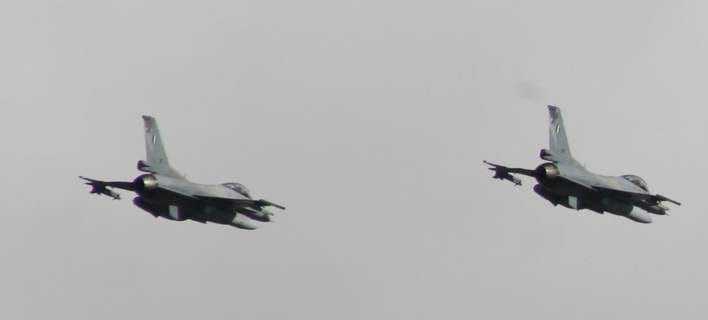- Oil prices have fluctuated due to concerns about potential supply disruptions in the Middle East following recent Israeli strikes on Iran, but no actual supply cuts have occurred.
- The Strait of Hormuz, a vital passage for global oil shipments, remains open despite tensions, and analysts generally believe a closure is unlikely.
- While direct attacks on oil infrastructure are a significant risk, current market conditions do not reflect a worst-case scenario of a major supply blockade, and prices may adjust if disruptions do not materialize.
Oil prices continued to rise on Tuesday afternoon, following a dip in Monday’s trading session. Today’s oil price action follows Friday’s biggest intraday surge in three years following the Israeli strikes on Iran.
The market’s worst fear—a major supply disruption in the Middle East—hasn’t materialized yet. And it may not, as was the case in the previous Israel-Iran flare-ups in recent years.
What Happened?
Oil prices spiked by 13% immediately after Israel hit Iran’s nuclear facilities and uranium enrichment sites early on Friday. The gain eased to 7% at close on Friday.
Then oil prices retreated on Monday as no major oil supply route or infrastructure in the world’s most important crude-producing region was affected after four days, and as reports emerged that Iran had signaled it seeks an end to hostilities and a return to nuclear talks if the U.S. stays out of the conflict.
As in previous such flare-ups in the Middle East, market speculators fear a disruption to supply and bet on rising oil prices.
In a sign that the world hasn’t lost a single barrel of oil from the region so far, the physical Dubai prices rose on Friday less than the Brent Crude futures. Actual consumers of the Middle East’s oil appear less concerned than the futures traders in Brent, Reuters columnist Clyde Russell notes.
As of Tuesday, no major oil export infrastructure has been hit, and the Strait of Hormuz—the most vital crude flows lane—remains open to navigation.
Despite Iran’s on-and-off threats to close the Strait of Hormuz, where a fifth of global daily crude consumption passes every day, the narrow lane has never been blocked in any previous conflict in the Middle East.
Analysts don’t think this will be the one that will lead to a closure of the Strait.
What Might Happen, Or Not
“We think ‘closure of the Strait’ has emerged as something of a market straw man scenario” in recent trading, analysts at RBC Capital Markets said in a note earlier this week.
However, oil supply from the Middle East could become vulnerable if the two sides decide to attack vital energy infrastructure in the region, the analysts noted, warning that energy, and oil in particular, are now “clearly in the crosshairs.”
“The fact that both sides targeted energy infrastructure on the second day of fighting represents a clear cause for concern,” the analysts wrote in the note carried by Bloomberg.
Iran’s Kharg Island—a major crude terminal and trade hub handling 90% of Iranian crude oil exports, could be targeted by Israel at some point, RBC says. Iranian proxies, for their part, could target oil facilities in neighboring Iraq, OPEC’s second-largest oil producer after Saudi Arabia, according to the bank.
“The White House has probably sought to dissuade Prime Minister Netanyahu from a Kharg Island strike, given that it could remove 90% of Iranian oil exports,” the bank’s analysts wrote.
The oil market’s biggest fear—the closure of the Strait of Hormuz—appears a distant prospect for now, analysts say, although they acknowledge that if oil flows are disrupted in the Strait, oil prices could easily hit $100 per barrel.
In the absence of a Middle East supply disruption, Brent prices may struggle to stay above $70 a barrel, Ole Hansen, Head of Commodity Strategy at Saxo Bank, said on Monday.
So far, there haven’t been direct strikes on oil infrastructure or export facilities. This, combined with oil failing to surpass Friday’s price peaks—$78.50 Brent and $77.60 WTI —invited profit-taking and hedging flows from producers early this week, Hansen commented.
“Still, the unfolding conflict presents a binary risk scenario: uninterrupted flows could trigger a sharp $10 correction, while any disruption to Iranian exports or a worst-case scenario blockade of the Strait of Hormuz could send prices soaring.”
The current oil price levels in the low $70s per barrel would only be justified if an actual supply disruption materializes, Hansen noted.
The Israel-Iran conflict appears likely to be contained and the United States could potentially play a central role, Mukesh Sahdev, Rystad Energy’s Global Head of Commodities Markets – Oil, said on Monday.
“A blockade remains the key risk that could push markets into uncharted territory,” Janiv Shah, Rystad Energy’s Vice President, Commodities Markets – Oil, commented, referring to a potential blockade of the Strait of Hormuz.
However, “Given its interest in keeping prices closer to $50, the US could play a stabilizing role,” Shah added.
“We maintain our view that this is likely to remain a short-lived conflict, as further escalation risks spiraling beyond the control of key stakeholders,” Shah said.
Oil prices continued to trade the war premium on Tuesday, amid uncertainties about how the conflict will evolve, with U.S. President Donald Trump leaving the G7 summit in Canada early and urging “everyone” in Tehran to evacuate immediately.
Yet, the oil market isn’t pricing a worst-case scenario of a blockade of the Strait of Hormuz that would choke off a large part of global supply—and it probably shouldn’t.





